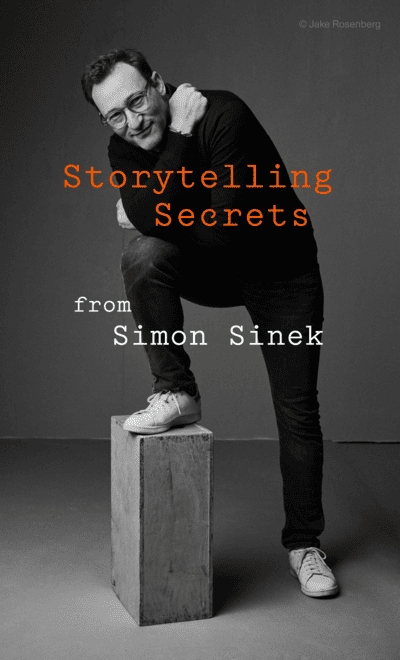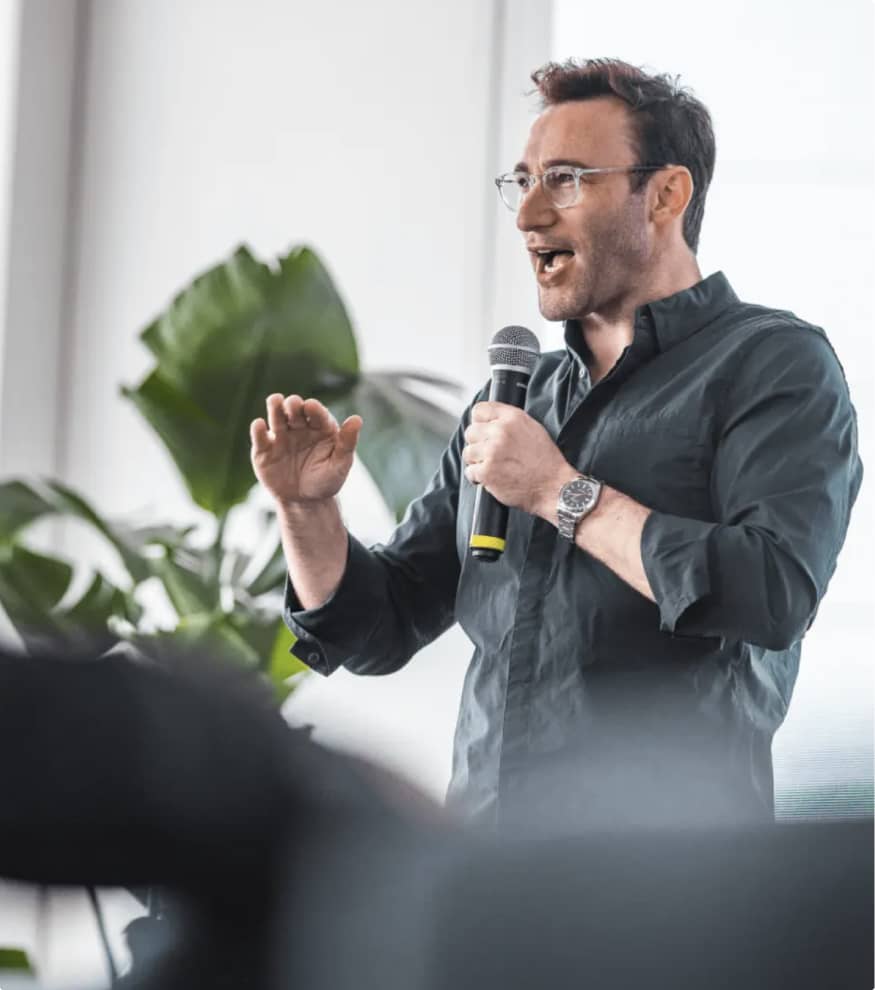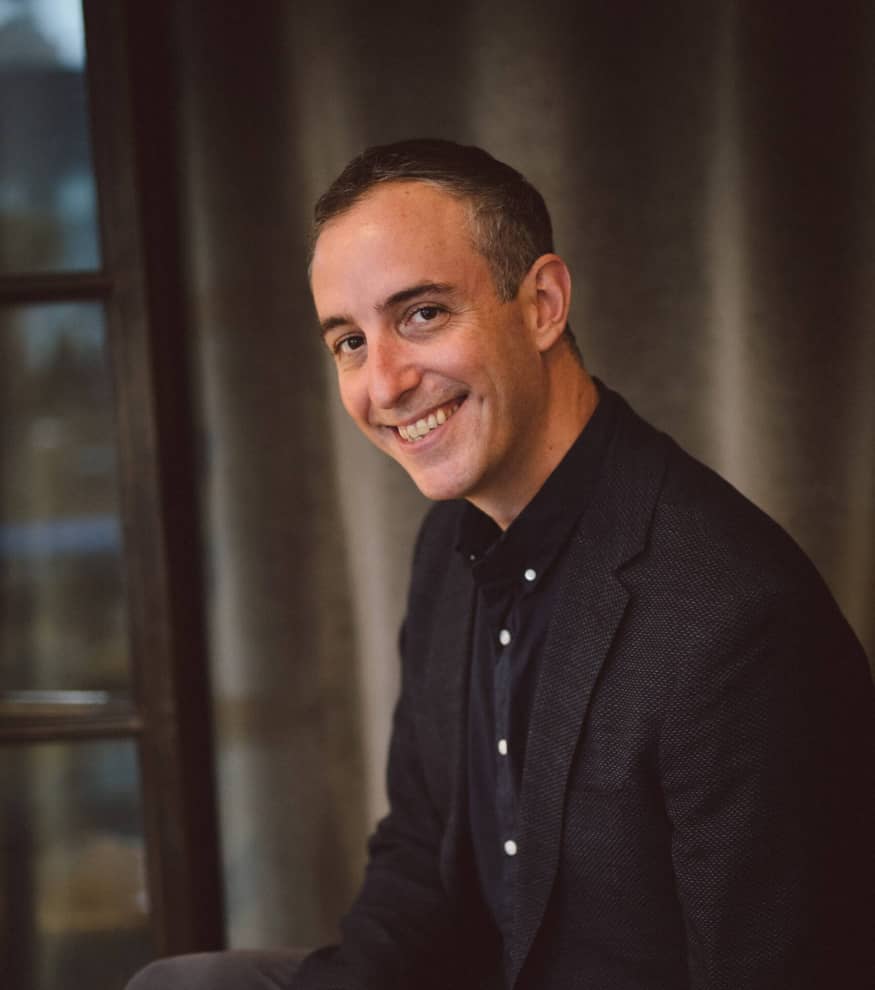Picture walking into a project kickoff meeting where everyone is polite, slightly guarded, and waiting for someone else to break the ice. Or imagine starting a new role where your team is watching to see if you’ll pretend to know everything or admit what you don’t. These moments happen daily in organizations everywhere, yet most leaders have never been taught how to navigate them effectively.
We train leaders to be decisive, confident, and clear—all essential qualities. But we rarely teach them one of the most powerful skills for building trust and accelerating team performance: how to be strategically vulnerable in a way that strengthens rather than weakens their leadership.
Beyond Traditional Leadership Training
At Team Simon, we’re constantly exploring how managers can develop the nuanced skills that can turn them into exceptional leaders. One of the most surprising and impactful skills we teach is something Simon calls “calibrated self-disclosure,” and it has the power to change how leaders build psychological safety without sacrificing authority.
“The skill: calibrated self-disclosure in the first five minutes,” Simon says. “Not radical transparency. Not keeping a stiff upper lip. Calibrated. It’s the leader saying one true, useful thing about their own limits early, tying it directly to the mission, and pairing it with a clear, confident request. Done well, it lowers threat and raises initiative. It makes the room exhale without making the room parent you.”
Simon paints a vivid picture of how this works in practice: “Picture a project kickoff. Everyone’s polite. Slightly guarded. You go first: ‘Quick context before we dive in. The AI piece is new territory for me. My worry is I’ll slow us down by asking basic questions. Our goal is still speed to learning, not speed to launch. Here’s my ask: if I drift into jargon soup, stop me. And if you see a faster path, say it in the moment.’ That’s it. Twenty seconds. Specific fear. Clear why. Concrete request. Confident tone. Then you move on.”
The result, according to Simon, is immediate and powerful: “What happens? People start telling the truth faster. The data scientist admits a dependency risk. The PM raises a timeline constraint. You just bought candor without drama.”
Simon identifies three critical elements that make this approach effective: “First, specificity. Vague confessions invite caretaking. Specific disclosures invite partnership. ‘I’m overwhelmed’ is a burden. ‘I’m behind on approvals; I’ll need 24 hours to respond’ is coordination. Second, sequencing. Do it in the first five minutes, before norms calcify. Whoever goes first sets the edge of what’s sayable. Third, tone. Confident vulnerability. Own the limit without collapsing into it. You’re not asking for permission to be weak. You’re modeling how strong teams talk.”
Why This Skill Is So Powerful
The genius of calibrated self-disclosure lies in what Simon identifies as its surprising nature. “Why it’s surprising: we teach leaders to be clear, not necessarily self-revealing, and when we talk about vulnerability, we swing to extremes,” he says. “Overshare, and you spook the room. Undershare, and you freeze honesty. Calibrated self-disclosure threads the needle. It sends three signals simultaneously: I’m human, I’m responsible, I’m here to serve the goal. That combination builds psychological safety without lowering standards.”
Most leadership training focuses on projecting confidence and authority, which often translates to leaders feeling pressure to appear infallible. But this approach actually creates distance and prevents the kind of honest communication that drives high performance.
Common Pitfalls to Avoid
Simon is clear about the mistakes that can derail this approach: “Common mistakes. Turning it into a monologue. Keep it under thirty seconds. Making it about your feelings without linking to the mission. Always tie your admission to why it matters for the work. Asking for rescue. Don’t do that. Make a crisp request that enables others to contribute. And performing it once, then reverting to perfection theater. Consistency builds trust; a single moment doesn’t.”
The key is understanding that this isn’t about emotional dumping or seeking sympathy. It’s a strategic communication tool that creates conditions for better collaboration and faster problem-solving.
One Framework You Can Use Tomorrow
Simon provides a practical template that any leader can implement immediately:
“A simple template you can use tomorrow,” he explains, breaking it down into five steps:
- “Name the context: ‘Before we start…'”
- “State the specific limit or fear: ‘I’m likely to…'”
- “Tie to the why: ‘Because our goal is…'”
- “Make the request: ‘So I need you to…'”
- “Reaffirm confidence: ‘If we do that, we’ll…'”
Simon offers a concrete example: “Before we start, quick flag. I haven’t run a launch with this many regulators. I may miss a compliance nuance. Our goal is a clean, on-time approval. So if you hear me skip a step, call it immediately. If we do that, we’ll move fast and stay safe.”
Scaling the Impact
But Simon doesn’t stop at individual application. He sees this as a team skill that compounds when adopted collectively: “Teach your directs to do the same. Start meetings with one calibrated disclosure from the leader, then one from the owner of the riskiest workstream. Two reps. Ninety seconds total. Watch the quality of discussion jump.”
This approach transforms team dynamics by establishing a new norm where honesty and strategic vulnerability become the foundation for high performance rather than barriers to overcome.
What makes this skill so powerful is that it represents a fundamental shift in how we think about leadership authority. Traditional models equate leadership strength with having all the answers. Simon’s approach recognizes that true leadership strength comes from creating conditions where the best answers can emerge from anywhere in the room.
“You’re not asking for permission to be weak,” Simon emphasizes. “You’re modeling how strong teams talk.”
For more ways to level up your leadership skills, be sure to check out more advice in Simon’s Optimism Library.












